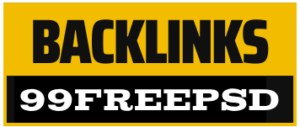Digital publishing offers a world of possibilities—but with so many format options, it’s easy to feel overwhelmed. Whether you’re creating educational content, corporate training material, or interactive eBooks, choosing the right format can make or break how your content is consumed, understood, and retained.
This guide will help you navigate the key considerations so you can select a format that fits both your content and your audience.
Why Format Matters More Than Ever
Today’s readers expect more than static PDFs. They want responsive, accessible, and interactive experiences that work seamlessly across devices. The format you choose determines everything from usability and engagement to distribution and scalability.
Whether you’re an EdTech startup, a digital publisher, or a training organization, selecting the right format ensures your content meets your goals—and your audience’s expectations.
Common Digital Publishing Formats (and When to Use Them)
Let’s break down the most popular formats and where each one excels:
1. PDF (Portable Document Format)
● Best for: Print-friendly documents, contracts, handbooks
● Pros: Universally accessible, easy to share, good for fixed layouts
● Cons: Not responsive on small screens, limited interactivity
PDFs are ideal when layout fidelity is crucial. But for learning or mobile-heavy use cases, they fall short.
2. EPUB3 (Electronic Publication)
● Best for: eBooks, interactive educational material, digital-first publishing
● Pros: Reflowable text, multimedia support, responsive, accessible
● Cons: Requires EPUB3-compatible readers or apps
EPUB3 is increasingly popular for its flexibility and support for interactive, multimedia-rich content. If your goal is learner engagement or accessibility, this is a top choice.
3. HTML5
● Best for: Web-based content, eLearning modules, mobile-first design
● Pros: Fully responsive, highly interactive, integrates with LMS platforms
● Cons: More complex to develop and maintain
HTML5 is perfect for dynamic learning environments and real-time content updates. However, it requires more technical resources.
4. SCORM/xAPI
● Best for: LMS-based training and performance tracking
● Pros: Tracks learner progress, integrates with most LMSs, supports detailed analytics
● Cons: Technical implementation required
These formats are great for corporate learning and compliance training where tracking and data reporting are essential.
Still Not Sure? Partner With the Experts
Sometimes the smartest move is to consult a digital publishing expert. A strategic partner like Academian can help you assess your goals, content type, user behavior, and delivery platforms to select the ideal format—and even build it for you.
Final Thoughts
Choosing the right format isn’t just a technical decision—it’s a strategic one. It impacts how your content is used, shared, and valued by your audience.
Whether you’re launching a new eBook series or rethinking your entire content delivery strategy, take time to match the format to your objectives. It’s the foundation for everything that follows.
To know more: https://academian.com/publishing-solutions/
https://academian.com/publishing-solutions/
How to Choose the Right Format for Your Digital Publishing Needs
